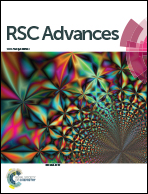The occurrence and biological significance of the α-keto-sugars pseudaminic acid and legionaminic acid within pathogenic bacteria
Abstract
This article describes the occurrence of the acidic sugars based on pseudaminic acid and legionaminic acid within pathogenic Gram-negative bacteria. In addition to presenting the structural variations found in these sugars, this article also discusses the potential biological role of these unusual sugars.


 Please wait while we load your content...
Please wait while we load your content...